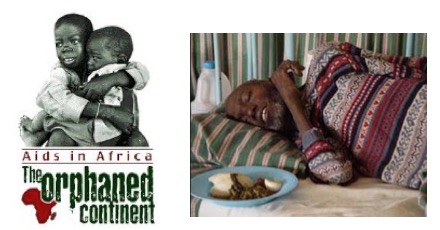Two decades ago Africa was considered to be a lost cause. The continent was being decimated by AIDS (as well as "normal" fatal infections like malaria) and there seemed to be no way to slow, let alone stop this new, unprecedented epidemic. Little did we know what would soon follow. Life could not be more different today
Thanks to powerful and effective antiretroviral drugs (1) and efforts to distribute them, Africa in 2017 is now a very different place, something that is illustrated by a December 2017 report by the World Health Organization, which looks specifically at progress in Kenya.
"[B]y 2030, the WHO says, there should be no new infections, no AIDS-related deaths and no stigma or discrimination related to the virus."
Griffins Manguro, The Conversation, 12/28/17
Even those of us who have participated in HIV research, followed the epidemic from the start, or both find the progress against AIDS to be simply astonishing. First, a little background.
The early 1990s, more than a decade after HIV was first discovered, was arguably the most hopeless period in the history of the infection. By 1993, four years after the approval of the first AIDS drug AZT, it was apparent that neither AZT (nor anything else) was capable of treating or controlling the infection. The epidemic was spreading wildly throughout the world and the death rate at that time was 100%, no matter whether you were in a poverty-stricken country in Africa or in Beverly Hills. With the exception of drugs that help stave off the opportunistic infections, there were no effective treatments. The glum mood at that time is reflected in a perspective look at AIDS, which was presented at the 20th International AIDS Conference in 2014.
"Unfortunately, 1993 is a disappointing year in HIV research: the results of the Concorde trial of AZT monotherapy shows no medium- or long-term benefit; also, the economic impact of AIDS epidemic is becoming more and more obvious."

The face of AIDS in Africa in the 1990s. Photos, Reuters. June 1997 (L) MIT (right)
Although the 1990s was a very bleak time (2) in Africa, it was, in fact, the beginning of the time in the US when HIV infection was becoming a manageable disease (like diabetes) rather than an automatic death sentence.
Although progress against AIDS was making steady headway beginning around 2005, the results of these efforts were not evident in Africa until 2011, when clinical trials showed that under controlled conditions that the transmission of HIV-seropositive men to seronegative women was reduced by 96% if the men took antiretroviral drugs properly (3). At the same time, other trials showed that vertical transmission (mother to child) could be reduced from ~30% to about 1% (4).
As I wrote in 2011 in Medical Progress Today, "[W]ith sufficient commitment, May 2011 will indeed be remembered as an extraordinary month; the time when we witnessed the beginning of the end of the global AIDS epidemic."
There was no lack of commitment, and the results are becoming more and more evident. Griffins Manguro's The Conversation article builds on the already-spectacular success that has been seen in Africa:
- In 2017, the number of people on antiretroviral drugs in Kenya was 40% more than in 2013.
- Of the 1.5 million people HIV-positive people in Kenya, 66% are receiving antiretroviral treatment.
- This number is expected to rise to 90% by 2020.
- By 2020 it is expected that 90% of seropositive people in Kenya will know their status.
- The WHO expects that by 2030 there will be no deaths from or new infections by HIV.

In the US, deaths from AIDS began to decrease in 1995. Source: National Center for Health Statistics
What we are seeing is nothing short of a medical miracle. It seems like such a short time ago that my colleagues ran into one failure after another for 14 years until Roche launched Invirase, the first direct-acting anti-HIV drug, in 1995.
Think about it. No AIDS-related deaths or new infections in Africa by 2030? This would have been science fiction two decades ago (5). Now it's real. Amazing.
NOTES:
(1) HIV is a retrovirus. Retroviruses, which are fairly unusual: 1) Convert viral RNA into DNA using an enzyme called reverse transcriptase 2) Insert the viral DNA into human DNA using an enzyme called integrase. This is why AIDS drugs are called sometimes referred to as HAART - (highly active antiretroviral therapy)
(2) In the late 1990s, the first drugs to inhibit HIV replication were available in the US. For the first time, ever deaths from AIDS began to decrease.
(3) In real life, the prophylaxis is less effective because of inadequate adherence to the drug regimen.
(4) In 2016 Cuba became the first country to completely eliminate mother-to-fetus transmission of the virus. Thailand, Belarus, and Armenia would soon follow.
(5) For a historical overview of how AIDS was tamed, see What Ever Happened to AIDS. How The Pharmaceutical Industry Tamed HIV.




